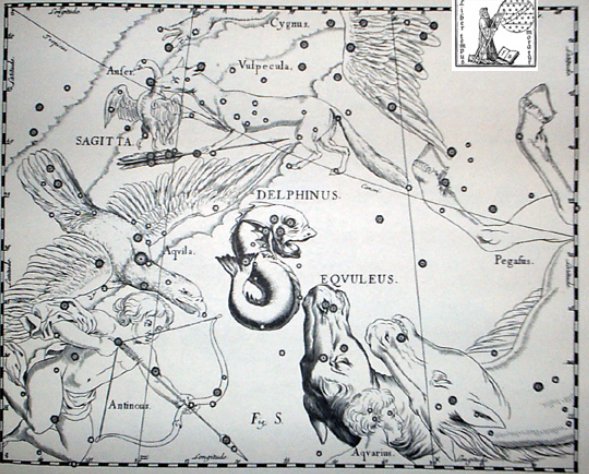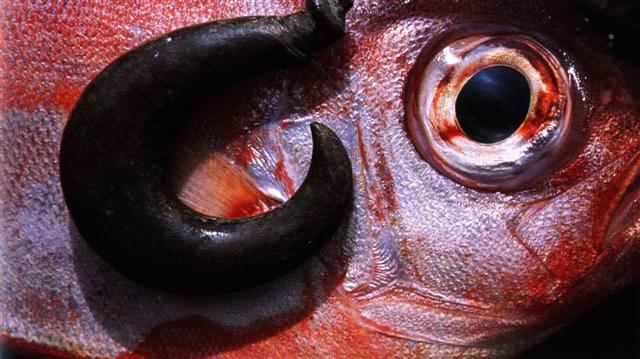There were 4 * 29 = 116 days from the
Fish-hook in Gb1-18 (→
4 * 29½) to vaha kai in Gb5-10:
|
 |
115 |
 |
|
Gb1-18 (247) |
Gb5-10 (363) |
|
ROTTEN MELON (*311) |
BEID (*62) |
|
θ Cancri (*128) |
LESATH (*244) |
|
 |
|
 |
 |
 |
 |
 |
|
Ga2-10 |
Gb1-10 |
Gb2-15 |
Gb2-24 |
Gb3-29 |
Gb5-10 |
As I remember it Hamlet had perceived
there was 'something rotten in the state
of Denmark'. And then, curiously, the
name of the last Quiche
capital was Rotten Cane:
... In the present
context 'mouth' has an additional
connotation, given that it refers in part to
Heart of Earth, the deity called 'Mundo'
today. This is the great Mesoamerican earth
deity, the ultimate swallower of all living
beings, depicted in Classic Mayan art (in
the Palenque relief panels, for example) as
an enormous pair of jaws upon whose lips
even the feet of great lords must rest in
precarious balance, and into whose throat
even great lords must fall. Turning to the
contemporary scene, daykeepers who visit the
main cave beneath the ruins of Rotten Cane,
the last Quiché capital, speak of the danger
of falling into 'the open mouth of the
Mundo' there, which is said to be more than
four yards wide ...
Rotten Melon was the name of
ε Delphini,
the star at its tail:

So what?
Let's try to count 4 * 29 glyphs
before Bb4-17.
138 (Bb4-17) - 116 = 22 and 421 + 22 =
443 (= 207 + 8 * 29½ = 236 + 7 * 29½ + ½).
|
a1 |
47 |
47 |
b1 |
22 |
207 + 236 |
|
9 |
31 |
|
a2 |
40 |
87 |
b2 |
47 |
78 |
|
a3 |
37 |
124 |
b3 |
43 |
121 |
|
a4 |
40 |
164 |
b4 |
17 |
138 |
|
25 |
163 |
|
a5 |
42 |
206 |
b5 |
40 |
203 |
|
1 |
443 - 236 |
|
a6 |
44 |
251 |
b6 |
40 |
243 |
|
a7 |
43 |
294 |
b7 |
41 |
284 |
|
a8 |
46 |
340 |
b8 |
42 |
326 |
|
a9 |
49 |
389 |
b9 |
50 |
376 |
|
a10 |
32 |
421 |
b10 |
42 |
418 |
|
|
b11 |
43 |
461 |
|
b12 |
45 |
506 |
|
sum |
421 |
sum |
506 |
|
... At the end of line
Ba5 Jaussen wrote: "Nous
cessons de mettre en
notre langue des mots
que les signes ne
comportent pas: un seul
mot les rend; nos
l'avons souligné
jusqu'ici
... |
All action creates signs.
 |
 |
 |
 |
|
Ba5-35
→ 265 |
Ba5-36 |
Ba5-37 |
Ba5-38 |
 |
 |
 |
 |
 |
|
Ba5-39 |
Ba5-40 |
Ba5-41 |
Ba5-42
→ 108 |
Ba5-43 (207) |
 |
 |
 |
 |
 |
 |
|
Ba6-1 |
Ba6-2 |
Ba6-3 |
Ba6-4 |
Ba6-5 |
Ba6-6 |
 |
 |
 |
 |
|
Ba6-7 |
Ba6-8 (215) |
Ba6-9 |
Ba6-10 |
Should we not also look at the
distance from the Great
Fishhook at Sirius?
 |
205 |
 |
|
Ga2-11 (41) |
Gb1-18 (247 = 41
+ 183 + 23) |
|
ºJune 30 (181) -
heliacal Sirius |
182 |
'Dec 30 (364) -
nakshatra Sirius |
|
ºDec 30 (364 =
181 + 183) |
'June 30 (181 =
364 - 183) |
|
23 =
precessional
depth from the
time of Gregory
XIII down to
Roman times |
|
... Thus was dry
land fished up
by Maui, which
had lain beneath
the sea ever
since the great
rains that were
sent by the Sky
father and the
god of winds.
The Maori people
say that the
north island of
Aotearoa,
which certainly
is shaped much
like a fish, is
Te Ika a Maui;
and according to
some tribes the
south island is
the canoe from
which he caught
it. And his hook
is the cape at
Heretaunga
once known as
Te matau a Maui,
Maui's Fishhook
(Cape
Kidnappers). In
some of the
other islands
which lie across
the sea towards
Hawaiki,
the people say
that theirs is
the land that
Maui pulled up
from below
...
 |
This action would imply counting from a
place in the G text 247 (Gb1-18) - 41 (Ga2-11)
= 206 days earlier:
 |
205 |
 |
115 |
 |
|
Ga2-11 (41
→ Bharani) |
Gb1-18 (247) |
Gb5-10 (363) |
|
ω Gemini (*105.4) |
ROTTEN MELON (*311) |
BEID (*62) |
|
NUNKI (*288.4) |
θ Cancri (*128) |
LESATH (*244) |
|
*288.4 - *41.4 = *329 |
322 (= 2 * 161) |
|
... This [σ
Sagittarii] has been identified
with Nunki of the
Euphratean Tablet of the
Thirty Stars, the Star of
the Proclamation of the Sea,
this Sea being the
quarter occupied by Aquarius,
Capricornus, Delphinus, Pisces,
and Pisces Australis. It is the
same space in the sky that
Aratos designated as Water
...
 |
And in the B text 207 - 206 = 1.
Assuming we are on a right
track, a little summary could
be valuable. Given that vaha
kai in Bb4-17 represents the
day when Adhil was at the Full
Moon:
 |
 |
 |
 |
 |
|
Ba1-1 |
Ba1-2 |
Ba1-3 (509) |
Ba1-4 |
Ba1-5 |
|
Ka tuu i te Ragi |
ki te henua |
e rua |
no Hoatumatua |
ka hakanohoa |
|
*8 |
*9 |
*10 |
*11 |
*12 |
|
88 |
89 |
90 |
91 |
92 |
|
March 29 (88) |
30 (454) |
(455 = 509 - 54) |
April 1 (91) |
2 |
 |
 |
 |
 |
 |
|
Ba1-6 |
Ba1-7 |
Ba1-8 (514) |
Ba1-9 |
Ba1-10 |
|
*13 |
*14 |
*15 |
*16 |
*17 = *206 - *189 |
|
93 |
94 |
95 |
96 |
97 |
|
April 3 |
4 |
5 (95 = 460) |
6 |
7 |
|
188 |
 |
 |
 |
 |
|
Ba5-35 → 265 |
Ba5-36 |
Ba5-37 |
Ba5-38 |
|
*206 |
*207 |
*208 |
*209 |
 |
 |
 |
 |
 |
|
Ba5-39 |
Ba5-40 |
Ba5-41 |
Ba5-42 → 108 |
Ba5-43 (207) |
|
*210 |
*211 |
*212 |
*213 |
*214 |
|
290 |
291 |
292 |
293 |
294 |
|
Oct 17 |
18 |
19 |
20 |
21 |
 |
 |
 |
 |
 |
 |
|
Ba6-1 |
Ba6-2 |
Ba6-3 |
Ba6-4 |
Ba6-5 |
Ba6-6 |
|
*215 |
*216 |
*217 |
*218 |
*219 |
*220 |
 |
 |
 |
 |
204 |
|
Ba6-7 |
Ba6-8 (215) |
Ba6-9 |
Ba6-10 |
|
*221 |
*222 |
*223 |
*224 |
|
301 |
302 |
303 |
304 |
|
Oct 28 |
29 |
30 |
31 |
 |
 |
 |
 |
 |
129 |
|
Bb1-1 (422) |
Bb1-2 |
Bb1-3 |
Bb1-4 |
Bb1-5 |
|
*64 = *429 |
*65 |
*66 |
*67 |
*68 |
|
144 = 509 |
145 |
146 |
147 |
148 |
|
24 (643 - 134) |
May 25 (*65) |
26 |
27 |
28 (278 - 130) |
 |
 |
 |
 |
 |
 |
|
→ BHARANI |
Bb4-15 (136) |
Bb4-16 |
Bb4-17 (559) |
Bb4-18 |
Bb4-19 (140) |
|
Oct 5 (278) |
6 (644 - 365) |
7 (280) |
8 (464 - 183) |
(560 - 282 = 278) |
10 (140 + 143) |
|
...
Curiously the spine
of a human consists
of 7 neck bones, 12
dorsal bones and 5
tail bones, 24
vertebra in all.
Certainly this was
noticed very early
and thereafter
incorporated into
the myths, wherever
suitable. 5 tail
bones (although no
tail was visible
outside the human
body) must
correspond to the 5
extra days at the
end of the year (not
visible in the
calendar) ... |
|
ki to vae oho |
ma te tara huki |
a rere te manu |
ki to vaha kai |
ma te hoko huki -
kua rere te manu |
vae oho |
|
APAMI-ATSA (Child of
Waters) = θ Virginis,
ψ
Hydrae (198.5),
DIADEM = α Com. Ber.
(198.9) |
AL DAFĪRAH (Tuft) =
β
Com. Ber.
(199.4)
*158.0 = *199.4 -
*41.4 |
σ Virginis (200.4)
*159.0 = *200.4 -
*41.4 |
γ
Hydrae (201.0),
ι
Centauri (201.4)
*160.0 = *201.4 -
*41.4 |
Al Simāk-12 (Lofty)
/
Chitra-14 (Bright
One) /
Horn-1 (Crocodile) /
Sa-Sha-Shirū-20
(Virgin's Girdle) /
ANA-ROTO-3 (Middle
pillar)
MIZAR = ζ Ursae
Majoris (202.4),
SPICA = α Virginis,
ALCOR = 80 Ursae
Majoris
(202.7)
SADALMELIK (α
Aquarii)
*161.0 = *202.4 -
*41.4 |
71 VIRGINIS
(203.6) |
|
... Proclus informs
us that the fox star
nibbles continuously
at the thong of the
yoke which holds
together heaven and
earth; German
folklore adds that
when the fox
succeeds, the world
will come to its
end. This fox star
is no other than
Alcor, the small
star g near zeta
Ursae Majoris (in
India Arundati,
the common wife of
the Seven Rishis,
alpha-eta Ursae ...
 |
|
CLOSE TO THE FULL
MOON: |
|
April 6 (96) |
7 (*382) |
8 (363 + 100) |
9 (99 = 464) |
10 (465) |
11 (101) |
|
Al Batn Al Hūt-26
(Belly of the Fish)
/
Revati-28
(Prosperous) /
1-iku (Field
Measure)
MIRACH (Girdle) =
β
Andromedae, KEUN MAN
MUN (Camp's South
Gate) =
φ
Andromedae (16.0),
ANUNITUM =
τ
Piscium (16.5),
REVATI (Abundant) =
ζ
Piscium (16.9)
REGULUS
(α Leonis) |
ν Phoenicis (17.4),
κ Tucanae (17.6)
*341.0 = *382.4 -
*41.4
= *158.0 + *183.0 |
No star listed (18) |
ADHIL (Garment's
Train) = ξ
Andromedae
(19.3),
θ
Ceti (19.7) |
KSORA (Knee) =
δ
Cassiopeiae
(20.1),
ω
Andromedae (20.6),
γ
Phoenicis (20.8) |
δ Phoenicis (21.5) |
|
... Though Andromeda
has its roots most
firmly in the Greek
tradition, a female
figure in
Andromeda's place
appeared in
Babylonian
astronomy. The stars
that make up Pisces
and the middle
portion of modern
Andromeda formed a
constellation
representing a
fertility goddess,
sometimes named as
Anunitum or
the Lady of the
Heavens ...
 |
|
FEBR 1 (397) |
2 |
3 |
(464
- 64 = 400) |
5 |
6 (37) |
|
ε Equulei (317.8) |
No star listed (318) |
21h (319.6)
ARMUS =
η
Capricorni
(319.0),
DORSUM =
θ
Capricorni
(319.3),
TSOO = 24 Capricorni
(319.7) |
DRAMASA =
σ
Oct.,
χ
Capricorni (320.0),
ν
Aquarii (320.3),
γ
Equulei (320.6),
ο
Pavonis (320.8) |
α
Oct. (321.5),
δ
Equulei (321.7),
φ
Capricorni (321.8) |
KITALPHA (Part of a
Horse) =
α
Equulei
(322.0),
ALDERAMIN (The Right
Arm) =
α
Cephei
(322.9) |
|
... Ancient
references to a
south pole are of
course infrequent;
Ovid, howevever,
makes Phoebus allude
to it in his
instructions to
Phaëton ... and
Pliny tells us that
the Hindus had given
it a name,
Dramasa ... |
In the flag of Brazil the
South Pole star is indicated
as a little dot at the
bottom with Spica upraised
above the broad band:


|
























